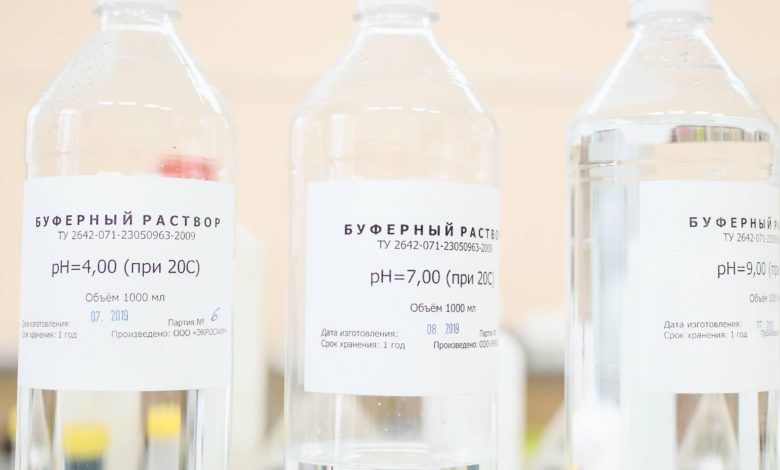Ferulic Acid: Definition, Sources, Benefits, Dosage and Side Effects

There is evidence that this plant-based compound combats aging and some diseases. Ferulic acid is an organic compound found in the cell walls of some plants. Rich in antioxidants such as vitamin A, vitamin C and vitamin E, ferulic acid is most commonly found in anti-aging skin creams that are believed to neutralize free radicals that damage and age cells. Ferulic acid can also be taken orally as a dietary supplement. Alternative medicine practitioners believe that doing so can prevent or treat high blood pressure, diabetes, cancer, and other diseases affected by oxidative stress.
While ferulic acid found in supplements is usually derived from cereal grains, it can also be found in vegetables, fruits, seeds, and beans. Ferulic acid can be found in high concentrations in some herbal products used in traditional Chinese medicine, including Dong Quai (Angelica sinesis), Sheng ma (Cimicifuga heracleifolia) and Chuan Xiong (Ligusticum chuangxiong).
Health Benefits
Ferulic acid is best known for its skin protective properties. When applied topically, ferulic acid is reported to treat sun damage and reverse signs of aging (including fine lines and wrinkles). Ferulic acid is less frequently taken as an oral supplement, although some are believed to improve athletic performance and slow the aging process. In addition, ferulic acid is used in some cases for the prevention or treatment of certain health conditions such as:
- Alzheimer’s disease
- Atherosclerosis (“hardening of the arteries”)
- Cancer
- High cholesterol
- Hypertension (high blood pressure)
- Diabetes
- Menopausal symptoms
- Osteoporosis
Research supporting the use of ferulic acid is generally poor. To date, there is little evidence that ferulic acid can slow aging or treat any medical condition effectively. This does not mean that ferulic acid is completely useless. Here are the benefits reported by some of the current research:
Hypertension
Ferulic acid may help lower blood pressure, according to a 2013 study in the Journal of Cardiovascular Pharmacology. According to the researchers, hypertensive rats treated with ferulic acid for eight weeks experienced a significant decrease in systolic blood pressure, better blood flow to the kidneys, and a reduction in stiffness in the left ventricle (where blood is pumped to the body) in the heart. Although these results are positive, it is unclear whether the same effect could be achieved in humans. What’s more, it is unknown whether the dose used in mice (50 milligrams per kilogram) would be safe in humans, given that a 150-pound male should get no less than 3,400 milligrams per day.
Diabetes
Ferulic acid can provide better control of diabetes by alleviating inflammation in the pancreas (where insulin is produced) and liver (where blood sugars are stored). According to a 2012 study in the European Journal of Pharmacology, the combination of ferulic acid and resveratrol (another plant-based antioxidant) increased the activity of a compound known as nuclear factor-kB (NF-kB) in mice. Among its many functions, NF-kB plays a critical role in cellular inflammation. Scientists concluded that by reducing inflammation in the liver and pancreas, the combined agents have different anti-diabetic properties.
Despite the positive results, it is unclear how effective ferulic acid is on its own and whether and how these effects translate into real decreases in blood sugar levels in humans. More research is needed. Similar studies suggest that ferulic acid may improve glucose tolerance in people taking the anti-diabetes medication metformin.
Skin Protection
While few studies have tested the effects of ferulic acid on the skin, there is some evidence that it can prevent or at least reduce the damage caused by excessive sun exposure. According to a 2013 study published in PLoS One, a topical ointment containing ferulic acid and vitamin E reduced the number of skin lesions by about 20% in mice exposed to intense ultraviolet B (UVB) radiation. When used alone, vitamin E actually increased the number of lesions by roughly 15%. While this suggests that ferulic acid may reverse sun damage, the researchers never included mice tested with ferulic acid alone. Therefore, the study suggests that only ferulic acid can reduce the damage that vitamin E can cause on severely sun-damaged skin. More research is needed.
Alzheimer’s Disease
Some animal studies suggest that ferulic acid may improve cognitive function in Alzheimer’s patients by reducing oxidative stress that promotes brain plaque formation. According to a 2019 study in the Journal of Biological Chemistry, genetically modified mice to develop cerebral amyloidosis (brain plaques) were treated with a combination of ferulic acid and a plant-based compound known as epigallocatechin gallate (EGCG). After 15 months of treatment, the supplements have been found to reverse cognitive impairment in most learning and memory tests.
Despite the positive findings, there is no evidence that ferulic acid and EGCG are able to stop or reverse the development of amyloidosis. It is also unknown what effect the agents have on cognitive impairment and whether they will have an effect on humans. More research is needed.
Cervical Cancer
There is evidence that ferulic acid can slow the growth of cervical cancer tumors, according to a 2018 International Cancer Cell study, ferulic acid can inhibit mitosis (cell division) and stop the growth of cervical cancer cells in the test tube. This helped to further reduce the ability of cancer cells to invade normal cervical cells, and higher concentrations of ferulic acid produced better results. What ferulic acid couldn’t do was to induce apoptosis (programmed cell death), meaning it could help control cervical cancer rather than cure it. More research is needed.
Possible Side Effects of Ferulic Acid
Ferulic acid serums and creams are generally safe for most skin types. People with sensitive skin may also not tolerate products and may experience mild redness and irritation. People who are allergic to dandruff or oatmeal may experience an allergic reaction to ferulic acid serums obtained from these sources. Symptoms tend to be mild and may include redness, swelling, itching, rash, and peeling. Before using the ferulic acid serum, it should be slightly tested on a small patch of skin, wait 24 hours to see if a rash or other allergy symptoms appear.
Little is known about the long-term safety of ferulic acid when taken orally. As an organic compound derived from food, ferulic acid is assumed to be safe, but it is unknown to what point it can overdose on a supplement. In addition, it is not known which drug interactions may occur at which doses. For example, a 2013 study in the Journal of Ethnopharmacology found that ferulic acid increases the blood concentration of the anticoagulant Plavix (clopidogrel) and increases the risk of bleeding and bruising in mice. It is not known whether ferulic acid from wheat can trigger reactions in people with celiac disease or gluten sensitivity.
Given the lack of research, it is important to let your doctor know if you are taking or plan to take ferulic acid so that side effects and interactions can be monitored. The safety of ferulic acid in children, pregnant women or nursing mothers has not been established.
Dosage and Preparation
Ferulic acid skin care products are formulated together with these online as well as at many pharmacies and high-end cosmetic stalls. While some ferulic acid serums are sold as a luxury skincare product with a correspondingly high price tag, there is no evidence that they work any better than cheaper products with the same ingredients. Ferulic acid supplements can also be found online and at some pharmacies and stores specializing in dietary supplements.
There are no guidelines on the proper use of ferulic acid supplements. Most are sold in 250 milligram tablets, taken once a day with or without food. While taking supplements, it is recommended not to exceed the dose written on the product label. There is no evidence that higher doses will produce better results in humans. Those who are considering using ferulic acid are recommended to consult their doctor first, whether it is suitable for them. Ferulic acid should never be used as a substitute for standard medications to treat diabetes, high blood pressure, or any other chronic medical condition.
Because dietary supplements are not strictly regulated in the United States, quality can vary from one brand to another. To ensure quality and safety, brands that have been independently tested by a recognized certification body such as the US Pharmacopoeia (USP), ConsumerLab or NSF International should be preferred. In addition, attention should always be paid to the product label to control any additional ingredients that may be allergic. This is especially true for serum rich in vitamin E, which can cause contact dermatitis in some. The same applies to oral supplements made with wheat fillers, which can affect people with gluten intolerance. Ferulic acid serums and powders designed for skin care should never be taken internally.
Rich Sources of Ferulic Acid
Ferulic acid is found in many grains, seeds, fruits and vegetables. Cooking can increase the amount of ferulic acid in foods (especially grains) by breaking down the cellular compartments where it’s stored. Some of the foods rich in ferulic acid include:
- Apple seeds
- Barley
- Dandruff
- Citrus
- Egypt
- Eggplant
- Flaxseed bread
- Navy beans
- Rolled oats
- Popcorn
- Rice
- Rice bran oil
- Rye bread
Compared to ferulic acid supplements, ferulic acid from foods has more bioavailability as it is more easily absorbed in the gut. In contrast, free ferulic acid (not bound to plant cells) is largely insoluble and poorly absorbed.





